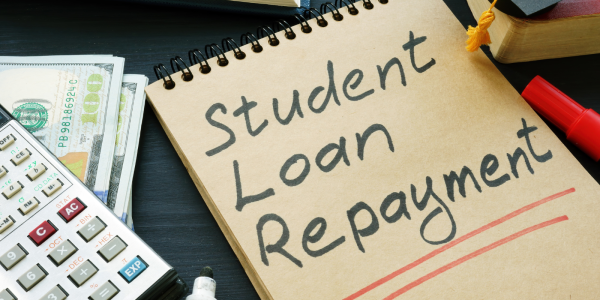Check your student loan repayments
Many graduates make student loan repayments through the Pay As You Earn (PAYE) system, if they are employed and earn over their relevant loan plan threshold. Usually, the loan repayment thresholds change at the beginning of each tax year. Check your April payslip to make sure your repayment is correct.

Content on this page:
Student loan repayments
Your employer deducts student loan repayments based on information received from:
- you – such as which student loan plan(s) you have; and
- HMRC – who receive information from the Student Loans Company (SLC).
You must provide the correct information about your loan when first starting your employment. Otherwise, your employer must use the Plan 1 repayment threshold. This could mean your loan repayments are calculated incorrectly.
To help you, see our other pages on:
- how to complete the new starter checklist for student loans, and
- calculating student loan repayments, which explains the different loan plan repayment thresholds.
Why you should check student loan deductions for April
We recommend you look at your payslip each time you get paid to check that your gross wages and any deductions are correct. But it is especially important to do so with your first payslip of the tax year, as you could see changes.
Some of the reasons you may see changes to your student loan repayments in your April payslip are given below.
Recent graduates
If you have recently graduated, you may see your first student loan repayment deducted.
You only start repaying undergraduate and most postgraduate loans the April after you graduate or leave your course and you earn above your plan repayment threshold. So, if you graduated in July 2023 then you could start repaying your student loan from April 2024.
Increased student loan repayment thresholds
You may have been repaying your student loan throughout the 2023/24 tax year, and then see that no repayment has been deducted in April 2024.
This could be because the student loan repayment threshold has increased above your salary.
For example, if you have a Plan 4 loan and your annual salary is £30,000, you would have made repayments during 2023/24 as the repayment threshold was £27,660. However, the 2024/25 threshold is £31,395 so there should be no loan repayments deducted.
Your wages have increased
You may have graduated a few years ago, but are now seeing your first student loan repayment deducted from your wages. This could be because of an increase in your wages. For example, you had a pay rise in April which took you above the loan repayment threshold.
Calculation of student loan repayments
Please note that student loan repayments are calculated on a pay-day basis. This means that if you receive a bonus or work overtime one month, it could result in a loan repayment being deducted. We explain this further on our page, Employees: student loan repayments.
If you need further help understanding your loan repayments, our website has:
- worked examples showing calculations for the different plan types;
- information about how postgraduate loans are calculated and repaid; and
- guidance on how your repayments are calculated and allocated if you are repaying more than one student loan.
What to do if you think your student loan repayments are wrong
If you think your repayments are wrong, then check with your employer to make sure they are using the correct loan plan. Your employer should be able to explain how the loan repayments have been calculated. Our website covers where you can get additional help if you need it.
Approaching full repayment of your student loan
If you expect to fully repay your student loan within the next two years, then HMRC and the SLC recommend you start paying the SLC directly via an agreed direct debit. This should avoid any overpayments of the outstanding loan balance which can happen when repaying via PAYE.
We cover this in detail on our section, Opting out of Plan 1, Plan 2 and Plan 4 PAYE repayments.



